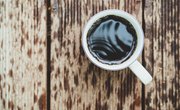
If you grew up in a snowy climate, it's likely some of your first memories of winter involved catching snowflakes on your tongue. And who could blame you? Fresh-fallen, fluffy snow just looks so appealing – plus, it was natural to wonder how it tastes!
And, clearly, the appeal of eating snow doesn't fully leave in childhood. Foods and drinks made with snow have actually become a trend, from homemade snow ice cream to – yup, you're reading this right – snow pancakes.
But what about your mom's warnings not to eat snow? That just because it looks clean doesn't mean it is – and that snow could be hiding some nasty compounds that'll make you sick.
Well, turns out, mom was (mostly) right. Here's what's lurking in snow, and how to eat it safely if you want to.
What are the Chemicals in Snow?
First, let's start with the basics: Snow is just frozen and crystallized water, which means its main chemical component is plain ol' H2O. Snow is formed in the clouds, which contain water vapor, and develop when that vapor freezes and the resulting ice crystals start to clump together. Eventually, the crystals form flakes that are heavy enough to fall, and – voilá – you've got yourself a snowstorm!
But just as there are pollutants found in other forms of precipitation – like pollution dissolved in rain – there are other chemicals and particles found in snow.
For one thing, snow is full of dust. That's because dust is actually one of the key components of snowflakes, the University of California explains. Dust particles provide the "base" that the ice begins to crystallize around, which means at the center of every snowflake is a piece of dust.
Snowflakes can also absorb chemicals as they form, fall and collect on the ground. Research published in Environmental Science: Processes and Impacts in 2016 found that snow can absorb engine exhaust, as well as particles from gasoline. That means if you live an an urban area, with plenty of traffic around, your snow is likely loaded with pollutants.
Then, of course, there's the snow on the ground. You probably don't need us to tell you that gray or yellow snow isn't safe to eat. But fallen snow can absorb pollutants too – and the longer it's there, the more that could be lurking in that snowbank!
And be sure to avoid pink snow. It may contain red algae that can make you sick.
So Can You Ever Eat Snow Safely?
Let's be honest, eating snow – or making food with fresh snow – can be a fun way to enjoy winter. And you (probably) don't need to avoid it entirely. The University of California ScienceLine recommends sticking to a small amount of fresh snow, which you collect in a clean container (aka, not your mittens).
What's more, you'll get cleaner snow with fewer pollutants if you start collecting it after it's been snowing for a while, reports NPR. After a few hours, the falling snow has absorbed most of the pollutants from the atmosphere, so you'll get a much safer "harvest" than if you went out to collect your snow right away.
Really, it's safest not to eat snow at all. But if you do want to eat it, limit your snow intake to a small scoop or a few flakes on your tongue. And if you do get sick, make sure to tell your doctor you ate snow, so they can run the right tests to find (and cure!) the underlying problem.
References
- University of California, Santa Barbara: Is it safe to eat snow?
- Environmental Science: Processes and Impacts: Role of snow and cold environment in the fate and effects of nanoparticles and select organic pollutants from gasoline engine exhaust
- Health: Is it Safe to Eat Snow
- NPR: So You Want To Eat Snow. Is It Safe? We Asked Scientists
About the Author
Sylvie Tremblay holds a Master of Science in molecular and cellular biology and has years of experience as a cancer researcher and neuroscientist. Before launching her writing business, she worked as a TA and tutored students in biology, chemistry, math and physics.
